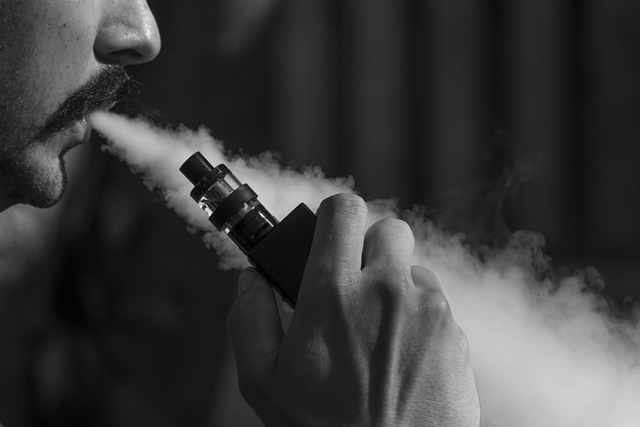Unveiling the Truth: What Does the Tooth Fairy Do with the Teeth?
The Tooth Fairy has been a beloved figure in children’s folklore for generations, but have you ever stopped to wonder what she actually does with all those teeth? In this article, we will delve into the mysterious world of the Tooth Fairy and uncover the truth behind her curious collection. Join us as we explore the age-old question: What does the Tooth Fairy do with the teeth?
1. The Mysterious Role of the Tooth Fairy: Debunking Myths and Revealing Facts
Many people have grown up believing in the magical Tooth Fairy who exchanges lost teeth for money while children sleep. However, the origins and true role of the Tooth Fairy may surprise you. Let’s debunk some common myths and reveal some fascinating facts about this mysterious figure.
Contrary to popular belief, the Tooth Fairy as we know it today is a relatively modern invention. The tradition of children leaving their teeth under their pillows in exchange for a gift dates back to the early 20th century, with variations in different cultures around the world. In fact, the Tooth Fairy as a fairy-like being is a North American concept, with different countries having their own unique customs for handling lost baby teeth.
While the Tooth Fairy may seem like a harmless and whimsical character, some experts believe that the tradition can actually help children cope with the natural process of losing their baby teeth. By turning a potentially scary experience into a fun and rewarding one, the Tooth Fairy can help children feel more comfortable and positive about growing up.

2. The Origins of the Tooth Fairy Tradition: A Look into Cultural Beliefs and Practices
The Tooth Fairy tradition has deep roots in various cultural beliefs and practices around the world. In many cultures, losing a tooth is seen as a rite of passage, symbolizing growth and change. The Tooth Fairy is often portrayed as a benevolent figure who collects children’s lost teeth and leaves behind a small token of appreciation.
Some interesting variations of the Tooth Fairy tradition include:
– In Spain and Latin American countries, a small mouse called Ratoncito Pérez or El Ratón de los Dientes is believed to exchange teeth for gifts.
– In Japan, children traditionally throw their lost teeth onto the roof of their house and make a wish for their new teeth to grow in strong and healthy.
– In some African cultures, children bury their lost teeth in the ground, believing that it will bring good luck.
These diverse customs highlight the universal significance of losing a tooth and the ways in which different cultures have interpreted and celebrated this natural occurrence.
3. The Tooth Fairy’s Secret Mission: Understanding the Symbolism Behind Tooth Collection
The Tooth Fairy’s secret mission goes beyond just collecting teeth under pillows. This beloved childhood figure actually represents a powerful symbol of growth and transition. By understanding the symbolism behind tooth collection, we can gain a deeper appreciation for the Tooth Fairy’s role in children’s lives.
One key aspect of the Tooth Fairy’s mission is to help children navigate the changes that come with losing a tooth. This process symbolizes the natural cycle of growth and renewal, as children transition from baby teeth to adult teeth. The Tooth Fairy’s visit and the exchange of a small gift or money serve as a comforting ritual that acknowledges and celebrates this important milestone.
Additionally, the Tooth Fairy’s mission also reinforces the value of good oral hygiene and self-care. By encouraging children to take care of their teeth and rewarding them for doing so, the Tooth Fairy promotes healthy habits that can last a lifetime. This subtle message helps children understand the importance of self-care and responsibility in a fun and engaging way.
4. The Tooth Fairy’s Connection to Childhood Development: Exploring Psychological Perspectives
Many psychologists believe that the Tooth Fairy plays a significant role in childhood development, shaping beliefs and behaviors that can have lasting effects on a child’s psychological well-being. Here are some key psychological perspectives to consider:
- **Imagination and creativity**: The Tooth Fairy myth encourages children to use their imaginations and engage in creative thinking as they envision a magical being who collects their lost teeth.
- **Emotional development**: The excitement and anticipation surrounding a visit from the Tooth Fairy can help children develop positive emotions such as joy and wonder, fostering a sense of magic and whimsy in their lives.
- **Loss and acceptance**: Losing a tooth can be a significant event for a child, and the ritual of placing it under the pillow for the Tooth Fairy to collect can help them process feelings of loss and learn to accept change.

5. The Tooth Fairy’s Enigmatic Rituals: Unveiling the Mysteries of Tooth Disappearance
Many children around the world eagerly anticipate the visit of the Tooth Fairy after losing a tooth. But have you ever stopped to wonder about the mysterious rituals that take place during this enchanting exchange? Let’s delve into the intriguing world of the Tooth Fairy’s enigmatic practices and uncover the secrets behind the disappearance of lost teeth.
One of the most puzzling aspects of the Tooth Fairy’s rituals is the method by which she collects teeth. While some believe that she simply takes the tooth from under the pillow, others speculate that she may use a more mystical approach. Some theories suggest that the Tooth Fairy uses a magical spell to transport the tooth to her secret realm, where it is transformed into a precious gift or token of appreciation.
- What happens to the teeth once they are collected?
- Are there any clues left behind by the Tooth Fairy during her visits?
- Could there be a deeper significance to the exchange of teeth for rewards?
6. The Tooth Fairy’s Global Presence: Examining Cross-Cultural Variations in Tooth Fairy Traditions
Many cultures around the world have their own unique traditions surrounding the Tooth Fairy. Here are some interesting cross-cultural variations:
- Spain: In Spain, children place their lost teeth under their pillows and wait for Ratoncito Pérez, a tiny mouse, to come and collect them.
- India: In India, the Tooth Fairy is known as the Tooth Mouse. Children place their lost teeth in a mouse hole or under their pillow for the Tooth Mouse to collect.
- Japan: In Japan, children traditionally throw their lost teeth on the roof and make a wish for their new teeth to grow in strong and healthy.
These variations in Tooth Fairy traditions highlight the diversity of cultural beliefs and practices around the world. Despite the differences, the underlying theme of celebrating the loss of baby teeth and the arrival of permanent teeth remains consistent across cultures.
7. The Tooth Fairy’s Impact on Children: Analyzing the Effects of Belief in a Magical Being
Children’s belief in the Tooth Fairy can have a significant impact on their development and understanding of the world around them. This magical being, often associated with the exchange of lost teeth for money or gifts, plays a role in shaping children’s beliefs about magic and fantasy. Here are some key points to consider when analyzing the effects of this belief:
- Imagination and creativity: Belief in the Tooth Fairy can spark children’s imagination and creativity, as they create stories and scenarios around the magical being’s visits.
- Loss and acceptance: The Tooth Fairy can help children cope with the loss of a tooth by turning it into a positive and exciting experience, promoting acceptance of change.
- Generosity and kindness: Encouraging children to give their lost teeth to the Tooth Fairy in exchange for a reward can teach them about the importance of generosity and kindness.
Overall, the Tooth Fairy’s presence in a child’s life can have both positive and negative effects, depending on how it is perceived and understood. By analyzing these effects, we can gain a better understanding of the role that belief in magical beings plays in children’s development and well-being.
8. The Tooth Fairy’s Evolution over Time: Tracing the History of Tooth Fairy Folklore
The concept of the Tooth Fairy has evolved significantly over time, with various cultures around the world embracing their own unique folklore surrounding this mythical figure. Here is a brief overview of the history of the Tooth Fairy and how it has changed over the years:
– In ancient European folklore, it was common for parents to bury their children’s lost teeth in the ground to prevent witches from finding them and placing curses on the child. This practice eventually evolved into the more modern tradition of exchanging teeth for money or gifts.
– The Tooth Fairy as we know it today gained popularity in the early 20th century in the United States, thanks to a combination of marketing efforts and the desire to create a more child-friendly version of the tooth-loss experience. This version of the Tooth Fairy is typically depicted as a benevolent fairy who exchanges lost teeth for money or small gifts.
– Over time, the Tooth Fairy has become a beloved figure in popular culture, with books, movies, and even a National Tooth Fairy Day celebrated on August 22nd. Despite its modernization, the essence of the Tooth Fairy as a symbol of childhood innocence and wonder remains a constant in the ever-changing landscape of folklore.
9. The Tooth Fairy’s Place in Modern Society: Assessing the Relevance of a Timeless Tradition
In today’s fast-paced world, the concept of the Tooth Fairy may seem like a quaint tradition from a bygone era. However, upon closer examination, it becomes clear that the Tooth Fairy continues to hold a special place in modern society. Here are some key points to consider when assessing the relevance of this timeless tradition:
- Cultural Significance: The Tooth Fairy is deeply ingrained in Western culture and has become a beloved childhood rite of passage for many families.
- Educational Value: The Tooth Fairy can serve as a fun and engaging way to teach children about the importance of oral hygiene and the natural process of losing baby teeth.
- Emotional Connection: The anticipation of a visit from the Tooth Fairy can create lasting memories and foster a sense of wonder and magic in children.
10. The Tooth Fairy’s Legacy: Reflecting on the Enduring Symbolism of Tooth Loss and Childhood Fantasy
In many cultures around the world, the idea of the Tooth Fairy has been a beloved childhood tradition for generations. The symbolism of losing a tooth and the magical exchange that follows has captivated children and sparked their imagination for centuries.
**Key Points**
- The Tooth Fairy represents a universal symbol of childhood innocence and wonder.
- The tradition of the Tooth Fairy helps children cope with the physical and emotional changes that come with losing a tooth.
- Reflecting on the enduring legacy of the Tooth Fairy reminds us of the importance of preserving childhood fantasies and traditions in a rapidly changing world.
Frequently Asked Questions
Q: What is the origin of the Tooth Fairy tradition?
A: The Tooth Fairy tradition is believed to have originated from European folklore dating back to the Middle Ages.
Q: Why does the Tooth Fairy collect children’s teeth?
A: The Tooth Fairy collects children’s teeth as a symbolic gesture to mark the transition from baby teeth to permanent teeth.
Q: What does the Tooth Fairy do with the teeth she collects?
A: The exact fate of the teeth collected by the Tooth Fairy remains a mystery, with various theories suggesting she uses them for magical purposes or to create a special fairy dust.
Q: Is there a specific amount of money the Tooth Fairy leaves for a tooth?
A: The amount of money left by the Tooth Fairy for a tooth can vary depending on cultural beliefs and family traditions, with some children receiving a small token while others receive a more substantial reward.
Q: How can parents make the Tooth Fairy experience special for their children?
A: Parents can make the Tooth Fairy experience special by creating a sense of magic and wonder, such as leaving glitter or a note from the Tooth Fairy in exchange for the tooth.
Final Thoughts
In conclusion, the mystery of what the Tooth Fairy does with the teeth has been unveiled. Through various cultural beliefs and historical origins, we have learned that the Tooth Fairy plays a role in traditions surrounding the loss of baby teeth. While the exact fate of the teeth remains a subject of speculation, it is clear that the Tooth Fairy holds a special place in the hearts of children and families around the world. Next time a tooth is placed under a pillow, remember the magic and wonder that the Tooth Fairy brings to this timeless childhood tradition.






